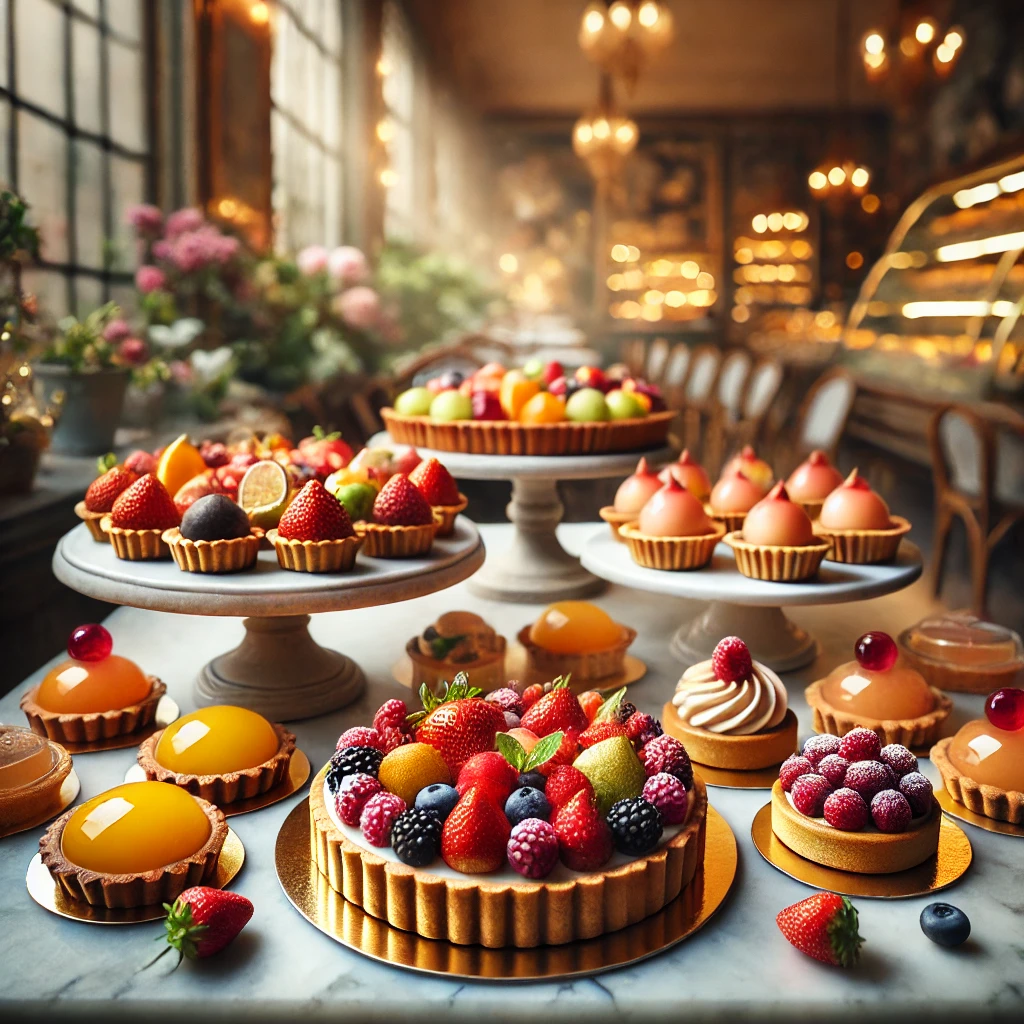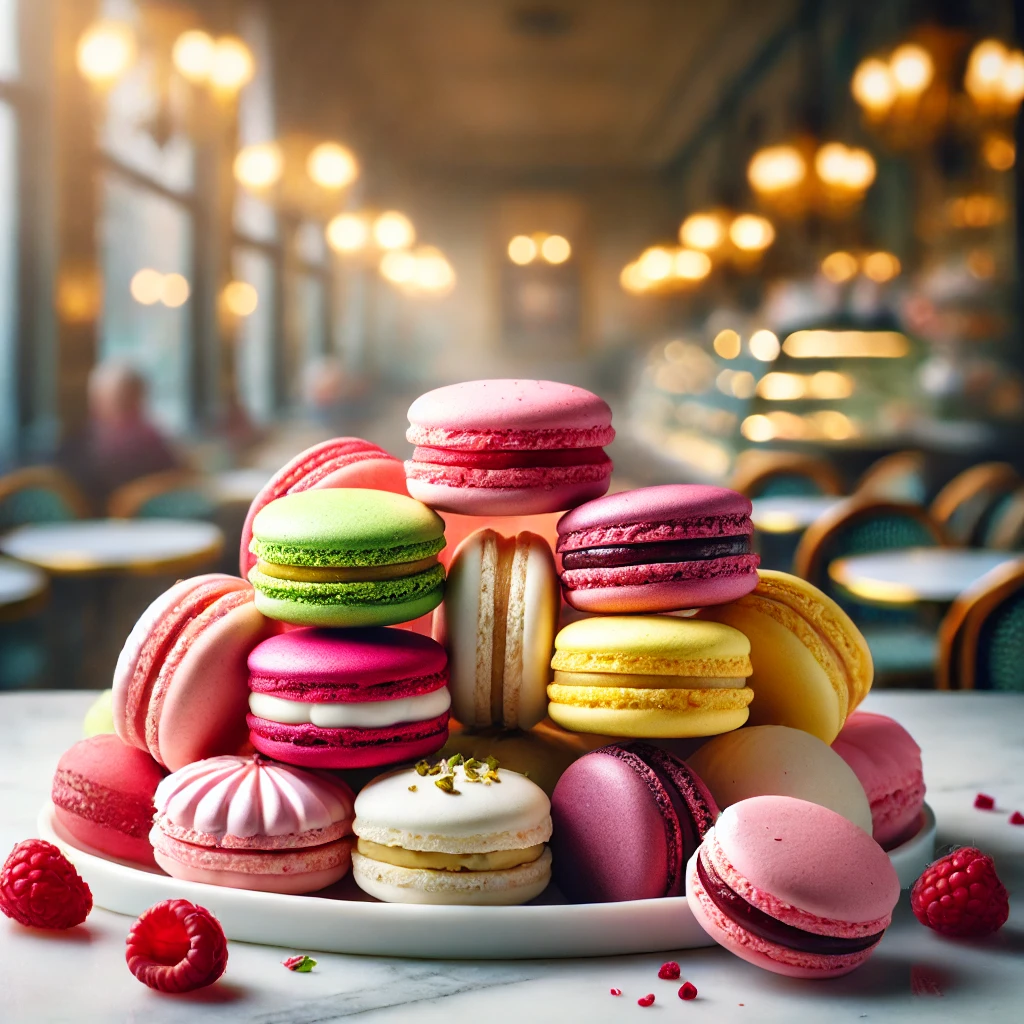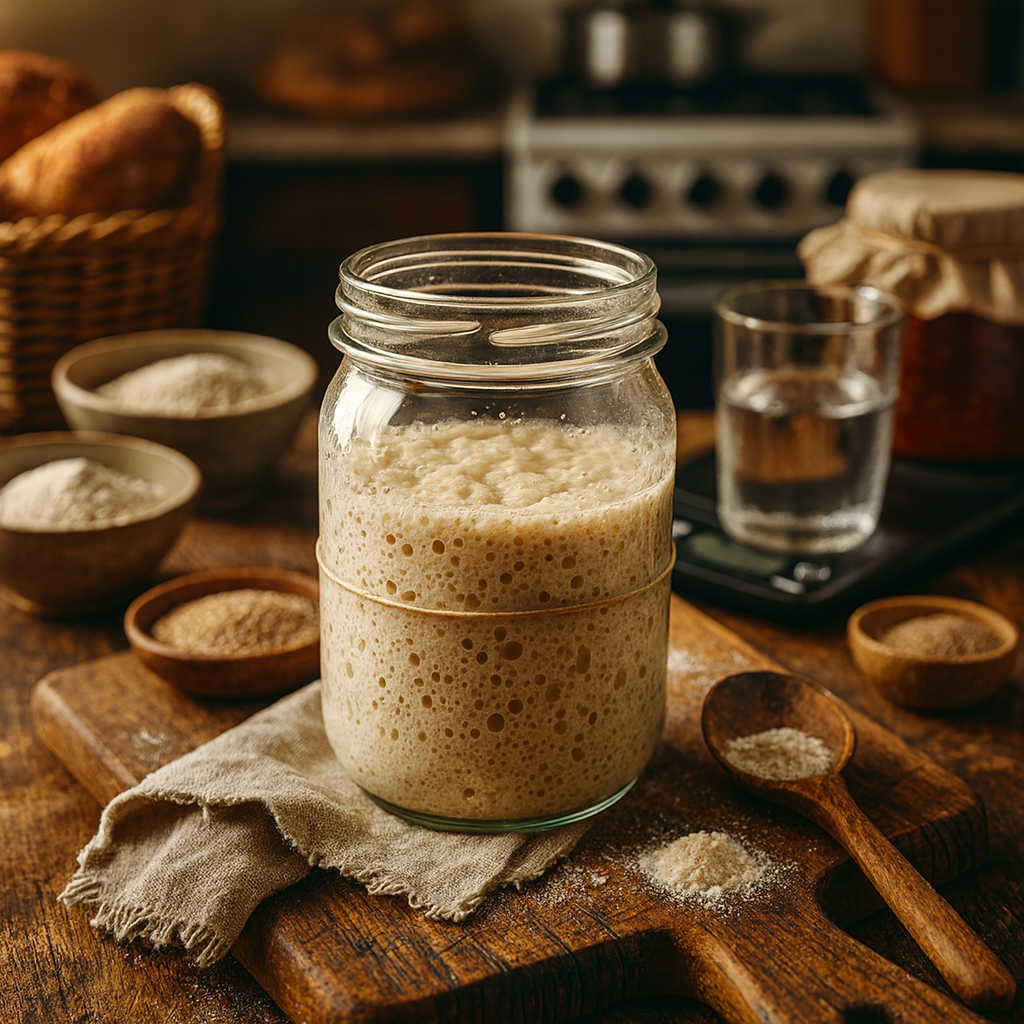Table of Contents
Introduction to French Pastries
The rich history of French pastries is as intricate and delightful as the confections themselves. French pastries have long been a staple of French culture and are renowned throughout the world for their elegance and sophistication. The tradition of pastry-making in France dates back to the Middle Ages, with early iterations of tarts and cream-filled delights gracing the tables of the elite. As techniques and ingredients evolved over centuries, so too did the complexity and variety of French pastries.
Key milestones in the evolution of French pastry-making include the establishment of guilds in the 13th century, which formalized the craft and set high standards for quality. The 19th century saw the advent of iconic recipes and techniques that would forever change the world of pastries. During this period, legendary pastry chefs such as Marie-Antoine Carême elevated pastry-making to an art form, introducing elaborate creations and laying the groundwork for modern pâtisserie.
Among the influencers of the French pastry revolution, Carême is celebrated for his architectural desserts and pâté feuilletée, while Auguste Escoffier, another colossal figure, streamlined kitchen operations and refined many classic recipes. Their contributions helped to position France as the epicenter of high-quality pastry-making, setting a global benchmark that persists to this day.
The diversity of French pastries is staggering, ranging from the buttery, flaky croissant to the delicate macaron. These pastries not only showcase the technical prowess and creativity of French patissiers but also reflect regional flavors and traditions. For example, the Kouign-amann hails from Brittany while the Tarte Tatin originated in the Loire Valley. Each pastry tells a story, contributing to the rich tapestry of French cuisine.
This guide endeavors to immerse you in the captivating world of French pastries, exploring their historic roots, cultural significance, and the endless array of exquisite varieties that continue to captivate taste buds worldwide. Whether you are an aficionado or a curious newcomer, prepare to embark on a delectable journey through the art of French patisserie.
The Iconic Croissant: History and Preparation

The croissant, a celebrated symbol of French pastries, has an interesting origin story that traces back to Vienna, Austria. Though widely considered a quintessential French delicacy, the croissant’s roots lie in the “kipferl,” a crescent-shaped bread from Austria that dates as far back as the 13th century. It was Marie Antoinette, an Austrian princess who became the Queen of France, who introduced this pastry to French bakers. Over time, the French refined this humble bread into the flaky, buttery delight that is now a staple in bakeries worldwide.
Traditional croissant preparation is an art that requires specific techniques and high-quality ingredients. The core components include flour, butter, sugar, salt, yeast, and milk or water. Type 45 flour, known for its fine texture, is preferred for its ability to create the desired lightness. The butter, often of a high-fat content like French “beurre d’Isigny,” is crucial for the layers of rich, flavorful lamination.
The process of making croissants involves several stages, starting with the detrempe, or base dough, followed by the incorporation of butter through a method called “lamination.” This involves folding and rolling the dough multiple times to create layers of butter and dough. These layers are essential for the croissant’s signature flaky texture. After the lamination, the dough is cut, shaped into crescent forms, and left to proof before baking. The final step involves baking at a high temperature, ensuring that the pastry puffs up beautifully.
While the classic croissant is a masterpiece on its own, various delicious variations have also emerged. Almond croissants, filled with frangipane and topped with sliced almonds, are a popular choice for those craving a sweeter option. Chocolate croissants, or “pains au chocolat,” feature rich chocolate batons enveloped by layers of buttery dough, making for a delightful indulgence.
To achieve the perfect croissant at home, precision and patience are key. Ensure the dough is kept cold throughout the lamination process to maintain the distinct layers. Proofing should be done in a warm, humid environment to encourage proper rise. With practice, anyone can master the art of creating this iconic French pastry, offering a slice of Viennese history with a French twist in every bite.
Pain au Chocolat: A Chocolate Lover’s Delight

Pain au Chocolat, often referred to as the chocolate croissant, is a beloved staple in French pastry culture. Originating from the same buttery, laminated dough as the traditional croissant, Pain au Chocolat stands out with its inclusion of rich chocolate batons nestled within its flaky layers. This delightful pastry traces its roots back to 19th century France and has since been coveted by chocolate enthusiasts around the globe.
The key ingredients in authentic Pain au Chocolat include flour, butter, yeast, milk, sugar, salt, and of course, high-quality dark chocolate. The preparation process involves creating a laminated dough, a technique that requires meticulous folding and rolling to produce numerous layers. These layers, when baked, yield a pastry that is light, airy, and indulgently crispy on the outside with a soft, buttery interior.
While both the croissant and Pain au Chocolat share the same dough base, their filling makes the crucial difference. Croissants are typically enjoyed plain or with various sweet or savory additions, whereas Pain au Chocolat strictly adheres to its chocolate filling, making it a singularly divine treat for those with a penchant for chocolate.
For those aspiring to recreate the magic of Pain au Chocolat at home, adhering to some best practices can make a significant difference. First and foremost, using high-fat European butter will ensure the dough achieves its characteristic flakiness. The quality of chocolate also plays a pivotal role; opting for semi-sweet or dark chocolate batons can provide a richer flavor profile. Variations of this pastry can include fillings such as white chocolate, almond paste, or even fruit preserves, offering a unique twist on the classic.
Overall, the Pain au Chocolat remains an unmissable part of French pastries, holding its own against the myriad delights in a patisserie. Whether enjoyed with a cup of coffee in the morning or as an afternoon indulgence, it continues to be a testament to the timeless appeal of French baking artistry.
Éclairs and Choux Pastry: Mastering the Basics

The foundation of many exquisite French pastries, choux pastry, or pâte à choux, is a versatile and essential dough that forms the basis for treats such as éclairs, profiteroles, and cream puffs. Mastering the basic technique of choux pastry opens a gateway to creating an array of delectable desserts.
To begin, choux pastry involves a unique double-cooking process. First, water, milk, butter, and a pinch of salt are brought to a boil. Flour is then added all at once and stirred vigorously until the mixture forms a smooth ball and pulls away from the sides of the pot. This step, called the “panade,” is crucial for removing excess moisture. The dough is then transferred to a bowl, where it is left to cool slightly before the addition of eggs, one at a time. This incorporation of eggs is key, as it creates the dough’s pipable consistency and enables it to puff up during baking.
Once the choux dough is prepared, it can be piped into various shapes—long rods for éclairs, small mounds for profiteroles, or whimsical shapes for advanced pastries. Baking at a high temperature initially helps the dough rise, while lowering the temperature partway through ensures thorough drying and even browning of the pastry.
Éclairs, particularly, are filled with an array of sweet creams. Classic options include rich vanilla pastry cream, silky chocolate ganache, or a fragrant coffee cream. The finishing touch is the glaze: a glossy layer of chocolate or fondant, adding both visual appeal and delectable sweetness.
The versatility of choux pastry is demonstrated through other creations like profiteroles—small round puffs often filled with sweet cream and drizzled with chocolate sauce. Cream puffs, similarly, consist of choux puffs filled with whipped cream or custard.
Despite its straightforward process, several pitfalls can affect choux pastry. If éclairs are too flat, it could be due to underbaking or an overly wet dough. Hollow puffs indicate undercooked interiors. Proper baking times and careful attention to dough consistency are paramount for achieving perfect results.
By mastering the fundamentals of choux pastry, one can craft a variety of French delicacies, each offering a symphony of flavors and textures. Whether it’s the indulgent éclairs, airy profiteroles, or creamy puffs, the potential of choux pastry is limited only by one’s creativity and culinary ambition.
Tartes and Tartlets: The Art of French Tarts

French tarts, or “tartes,” are a quintessential element of French patisserie, celebrated for their delicate crusts and rich, flavorful fillings. Renowned varieties such as Tarte Tatin, Tarte aux Fraises, and Lemon Tart are staples in the array of French pastries, each offering a unique taste experience. Understanding the fundamentals of creating these exquisite tarts begins with mastering the perfect tart crust. The choice of crust, whether it’s pâte sucrée, pâte sablée, or pâte brisée, plays a critical role in defining the tart’s texture and flavor profile.
Pâte sucrée, a sweet pastry dough, is ideal for desserts like Tarte aux Fraises, where a sturdy yet tender base is essential to complement the sweet, juicy strawberries. On the other hand, pâte sablée provides a crumbly, shortbread-like texture, making it perfect for Lemon Tarts. For tarts where a neutral, flaky crust is desired, such as Tarte Tatin, pâte brisée is the go-to option due to its versatility in both sweet and savory preparations.
When it comes to filling and flavor combinations, the possibilities are vast. The classic Tarte Tatin, an upside-down apple tart, features caramelized apples atop a buttery crust, showcasing the harmonious blend of sweet and tangy flavors. Tarte aux Fraises celebrates the freshness of ripe strawberries, often glazed with a thin layer of apricot jam to add shine and extra sweetness. Lemon Tart, revered for its bright, zesty filling, balances the tartness of fresh lemon juice with the richness of a creamy custard.
The choice of ingredients is critical in achieving the best results. Opting for high-quality butter, fresh fruits, and premium flours ensures a superior taste and texture. Presentation also plays a significant role in French pastries. A beautifully arranged tart, with meticulously placed fruits and a glossy finish, not only excites the palate but engages the eyes as well.
Mastering the art of French tarts requires patience and practice, but the rewards of creating these delightful pastries are immeasurable. Both sweet and savory variations offer endless opportunities for creativity, making them a timeless favorite in the world of French cuisine.
The Delicate Macaron: Techniques for Success

The macaron is a quintessential French pastry known for its delicate texture and exquisite flavor. This elegant confection traces its origins to 16th-century Italy and was later refined by French pâtissiers, evolving into the sophisticated treat we know today. Crafting the perfect macaron requires precision and a deep understanding of its fundamental components.
The essential ingredients for macarons include almond flour, egg whites, and sugar. Almond flour, finely ground almonds, imparts a rich nutty flavor and smooth texture. Egg whites are whipped to form stiff peaks, providing the necessary structure. For sweetness, granulated sugar is typically used in the meringue, while powdered sugar is often mixed with the almond flour to ensure a uniform batter.
A critical step in making macarons is macaronage, the process of folding the dry ingredients into the whipped egg whites. The goal is to achieve a smooth, glossy batter that flows like lava, a consistency that ensures the macarons will have their characteristic glossy, smooth tops. Careful folding is required to avoid deflating the mixture, which could lead to flat or misshapen macarons.
Ideal baking conditions are vital for macaron success. Baking at a consistent temperature, usually around 300°F (150°C), helps form the classic “feet” – the ruffled edge around the bottom of the shell. It’s also recommended to allow the piped macaron batter to rest before baking, forming a slight skin on the surface, which aids in developing the desired texture.
Once baked, macarons can be filled with a variety of options, including buttercream, ganache, or fruit jams. The filling adds flavor and moisture, making each bite a burst of delight.
Common issues such as cracked shells, hollow centers, or uneven textures can arise. Cracked shells often result from rapid temperature changes or under-mixed batter, while hollow centers may indicate overmixed batter or issues with oven temperature. Ensuring proper technique and conditions can help mitigate these problems.
Mastering the art of macaron-making is a rewarding endeavor that brings the beloved French pastry to life. With practice and attention to detail, anyone can create these delicate confections, offering a taste of France in every bite.
Regional Specialties: Exploring France’s Pastry Diversity
France’s reputation for exquisite pastries is not solely tied to Parisian classics like croissants and macarons; the country’s culinary landscape is rich with regional specialties that reflect local flavors and traditions. Each area in France prides itself on unique confections that tell the story of its heritage and resources. Here, we delve into a few notable examples that showcase the diversity of French pastries.
Kouign-Amann from Brittany

Originating from Brittany, Kouign-Amann is a pastry that exemplifies indulgence. Its name, derived from the Breton words for ‘cake’ and ‘butter’, signals its key ingredient: generous amounts of butter. The preparation method involves layering dough with butter and sugar, followed by folding and turning, similar to croissant dough but with a higher butter content. The result is a caramelized outer crust encasing a rich and flaky interior, offering a perfect balance of sweetness and buttery goodness. Traditionally enjoyed with a cup of cider, Kouign-Amann highlights the Breton affinity for hearty, comforting fare.
Canelés from Bordeaux

Hailing from Bordeaux, Canelés are small, cylindrical pastries known for their soft, tender custard center and dark, thick caramelized crust. The distinct texture is achieved by baking the pastries in copper molds at a high temperature. The batter, made of milk, sugar, flour, butter, and egg yolks, is flavored with vanilla and rum, imparting a richly aromatic quality. Canelés are a testament to Bordeaux’s sophisticated culinary scene, merging simple ingredients with meticulous technique to create a confection that’s both humble and elegant.
Tarte Tropézienne from Saint-Tropez

The Tarte Tropézienne, a glamorous dessert from the sun-drenched French Riviera, was popularized by Brigitte Bardot during the filming of “And God Created Woman” in Saint-Tropez. This sumptuous creation features a brioche base split and filled with a luscious blend of creams—typically a mixture of pastry cream and buttercream. Lightly dusted with pearl sugar, Tarte Tropézienne offers a delightful contrast between the airy brioche and the creamy filling. It embodies the breezy sophistication and relaxed luxury of the French Riviera, making it an iconic treat of Saint-Tropez.
These regional specialties underscore the incredible diversity found within French pastries. Each delicacy not only pleases the palate but also provides a glimpse into the local culture and traditions, celebrating France’s rich gastronomic heritage.
Final Thoughts and Tips for Aspiring Pâtissiers
Embarking on the journey of mastering French pastries is a delightful yet demanding endeavor. The art of creating exquisite pastries like croissants, éclairs, and macarons necessitates not just skill but also an unwavering commitment to practice, patience, and precision. Each French pastry, whether it’s the buttery layers of a croissant or the delicate shell of a macaron, embodies centuries of culinary tradition and craftsmanship, making it imperative for aspiring pâtissiers to respect the meticulous processes involved.
One cannot overstate the importance of practice. The consistency required to produce exceptional French pastries is achieved through repeated trials and learning from every attempt. Mistakes are an inevitable part of the process, but they also serve as valuable learning opportunities. Embrace them with the mindset that each error brings you one step closer to perfection. Patience, too, is crucial. Many French pastries require time-consuming techniques, such as extended resting periods for doughs and precise temperature control, which are essential for achieving the desired texture and flavor.
Precision in measurement and execution cannot be ignored. Baking, unlike other forms of cooking, is a science. Accurate measurements of ingredients, exact baking times, and specific temperatures are non-negotiable elements to ensure the success of your pastries. Tools like a digital kitchen scale and an oven thermometer can aid in achieving the necessary accuracy.
For those serious about advancing their skills, consider enrolling in online courses or attending workshops conducted by experienced pâtissiers. Renowned institutions such as Le Cordon Bleu offer comprehensive programs that cover the nuances of French pastry-making. Several online platforms also provide tutorials that can be extremely helpful for beginners and advanced bakers alike. Additionally, investing in well-regarded books on French pastries can serve as both an inspirational and practical guide.
In conclusion, the art of French pastry-making is a rewarding pursuit that combines creativity with precision. With dedication and the right resources, aspiring pâtissiers can transform their passion into magnificent creations that not only please the palate but also honor the rich legacy of French culinary artistry.






